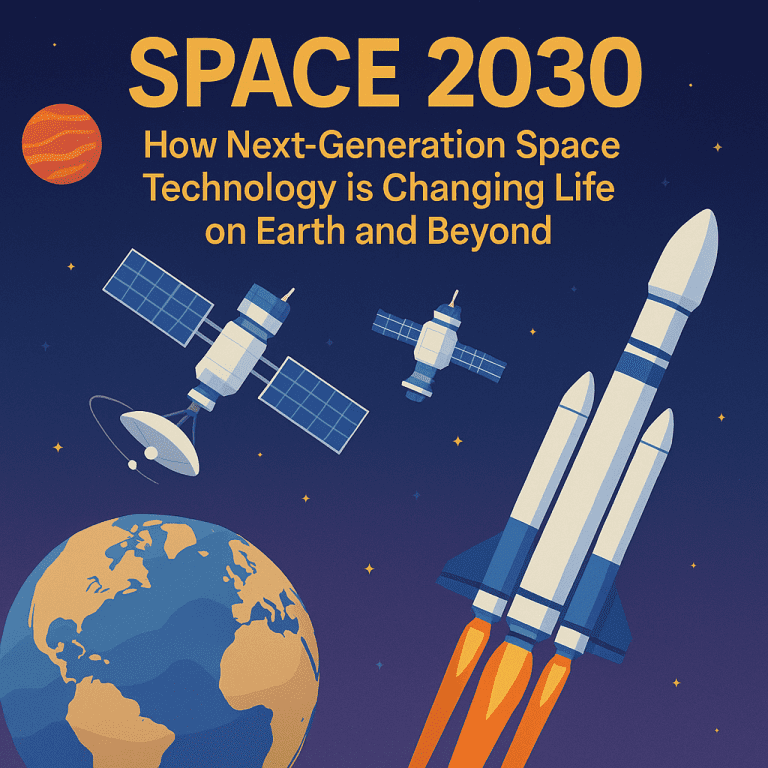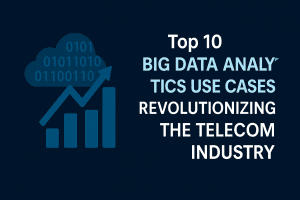Introduction
The space frontier is rapidly evolving—and by 2030, transformative space technology will reshape life on Earth and propel humanity further into the cosmos. From hyper-efficient satellites to in-space manufacturing and interplanetary ambitions, next-generation tools are already impacting not just science, but our daily lives, economies, and the future of sustainability. Here’s how these innovations are taking us to a new era.
The New Space Race: What’s Driving Change?
-
Explosion of Private Sector Involvement: Companies like SpaceX, Blue Origin, and a new generation of global startups are making launches, space data, and travel more accessible than ever before.
-
Miniaturization & Mass Production: Tiny satellites (CubeSats, nano-satellites) lower launch costs and democratize Earth observation, telecom, and scientific research.
-
Reusable Rockets & Advanced Propulsion: Dramatic cost reductions and renewed interest in deep-space missions, the Moon, and Mars.
-
AI & Edge Computing in Orbit: On-board intelligence allows spacecraft to analyze data, make decisions, and respond to events instantly—even on missions to deep space.
-
International Collaboration: Emerging space nations, universities, and corporations are contributing, fueling a global wave of discovery and competition.
How Space Technology Is Already Impacting Life on Earth
1. Planetary Monitoring and Sustainability
-
Advanced Earth Observation: Modern satellites track climate change, natural disasters, and agricultural trends in real-time. As much as 50% of all climate data now comes from space-based platforms.
-
Environmental Protection: Satellite imaging helps predict wildfires, assess resource use, and manage global water and food supplies.
-
Disaster Response: Early warning systems powered by space data enable better preparedness for hurricanes, earthquakes, and other crises.
2. Global Connectivity and Communication
-
Satellite Mega-Constellations: Projects like Starlink and Kuiper deliver high-speed internet to even the world’s remotest regions, bridging the digital divide.
-
Quantum-Encrypted Networks: Next-gen satellites are testing ultra-secure communications for banking, government, and privacy-centric industries.
-
Smarter Navigation: Enhanced GNSS systems will power more precise transport, logistics, and autonomous vehicles across the globe.
3. Revolutionizing Industries on Earth
-
Healthcare: Space-developed tech has spawned advanced water purification, remote medical imaging, and telemedicine, enabling healthcare access in even the most isolated corners of Earth.
-
New Energy Solutions: Technologies for space missions—like high-efficiency solar panels and batteries—drive advances in renewable energy and electric vehicles.
-
Manufacturing: Zero gravity enables the production of materials—like fiber optics and pharmaceuticals—with properties impossible to achieve on Earth.
Life Beyond Earth: Big Leaps by 2030
Space Stations, Habitats, and Tourism
-
Commercial Space Habitats: Companies and agencies plan for modules in orbit and Moon bases, supporting research and even tourism.
-
Space Tourism: Routine orbital trips for science, recreation, and industry—once science fiction—are entering early real-world adoption.
Moon, Mars, and Deep Space Ambitions
-
Artemis, Starship, and International Missions: Lunar settlements, Mars flybys, and robotic asteroid explorations are on track for the early 2030s, setting the stage for a multi-planetary human presence.
In-Space Manufacturing & Resource Extraction
-
3D Printing & Autonomous Robotic Assembly: Large-scale structures, satellites, and supporting hardware will be built in space, not just launched from Earth, reducing costs and enabling new designs.
-
Resource Mining: Asteroid and lunar mining could provide water, metals, and fuel critical for extended space operations.
The Big Picture: Space Tech’s Societal Impact
| Application | Example Technology | Earthly Impact |
|---|---|---|
| Climate & Sustainability | Hyperspectral satellites | Combat environmental crises, improve agriculture |
| Healthcare | Remote monitoring, imaging | Broaden access, boost emergency response |
| Education & Equality | Global internet constellations | Connect remote regions, spread knowledge |
| National Security | Quantum/AI-driven surveillance | Enhance safety, aid disaster management |
| Smart Cities | Satellite navigation/data | Power IoT, enable resilient urban infrastructure |
| Manufacturing | In-space factories | Advance materials, drive industry innovation |
Key Trends to Watch by 2030
-
AI-Driven Spacecraft: Smarter probes making decisions independently in deep space.
-
Sustainable Lunar Bases: Test beds for resource recycling, energy production, and self-sufficient habitats.
-
Democratization of Space: Universities, small nations, and even citizen groups gaining space access.
-
Cross-Border Collaboration: More nations and sectors joining forces for peace, science, and commerce in orbit.
Frequently Asked Questions (FAQ)
How does all this benefit non-space industries?
Spinoff technologies from space research routinely improve healthcare, environmental management, disaster response, communication, and even the food we eat.
Will costs of space access continue to drop?
Yes. Continued breakthroughs in reusable launch vehicles, ridesharing launches, and in-space manufacturing are making space more affordable and routine.
Is space tech helping sustainability goals?
Absolutely. From climate data to efficient energy and resource management, space tech is critical for tracking—and fighting—environmental challenges.
Could new discoveries in space impact daily life on Earth?
Yes—space has given us GPS, weather forecasts, clean water systems, and breakthrough medical imaging. With new tools, future impacts will be even broader and deeper.
Conclusion
By 2030, next-generation space technologies are more than missions to the stars—they’re a driving force for sustainability, equity, and innovation right here at home. As public and private collaboration intensifies, expect future breakthroughs to connect, inspire, and elevate people everywhere—on Earth and beyond.











